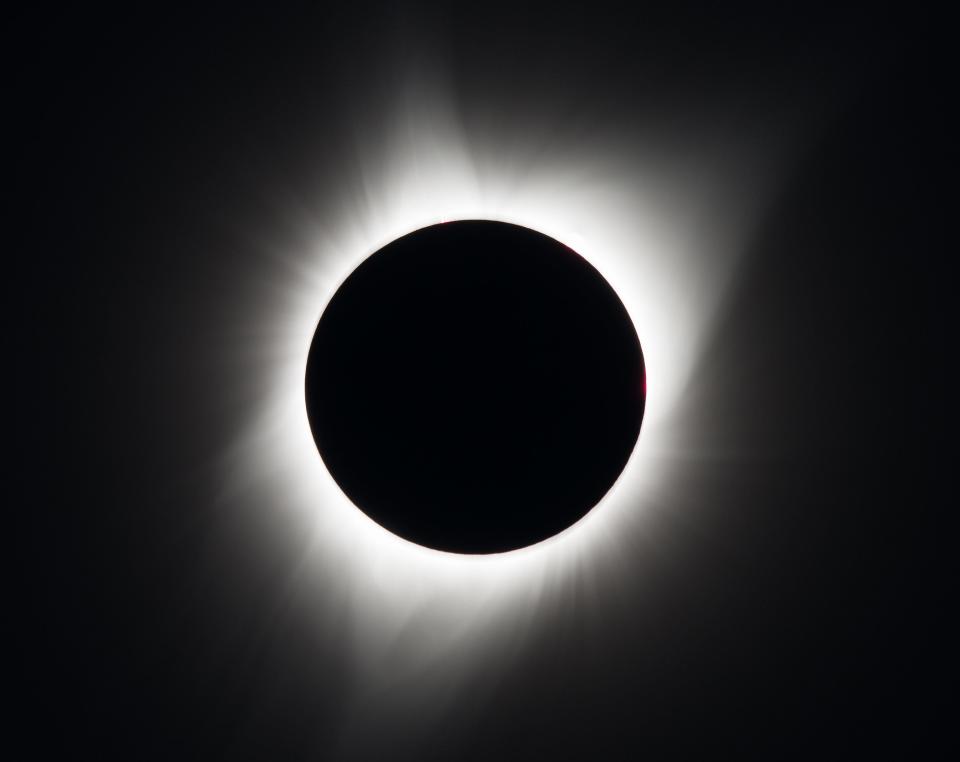Why don't eclipses happen every month? Moon's tilted orbit is the key.
The big day is coming soon: On Monday afternoon, April 8, a total eclipse of the sun will cross over a dozen states as it traverses from Texas to Maine. Millions of people are expected to travel to see it.
Indeed, for just the second time in seven years, day will suddenly become night for a few brief, wondrous minutes as the orbiting moon blocks the sun's light along a southwest-to-northeast path across the continent.
But why don't eclipses happen more often — perhaps every month as a part of the lunar cycle? There's a simple answer: The orbits of the Earth and the moon are out-of-sync and they only briefly align to form occational eclipses, according to NASA.
Specifically, the moon’s orbit is tilted about 5 degrees compared to the plane of Earth’s orbit around the sun. Because of this tilt, the moon — as seen from Earth’s perspective — usually appears to pass above or below the sun, NASA said.

What is a solar eclipse?
A total solar eclipse happens when three celestial spheres — the sun, moon and Earth — line up in a specific way in space.
According to NASA, a solar eclipse happens when the moon's orbit aligns with Earth, and it passes between the sun and Earth. That casts a moving shadow on Earth that either fully or partially blocks the sun's light in some areas. This leads to a period of partial or full darkness on a narrow stretch of Earth.
A solar eclipse happens during a new moon, EarthSky said. A lunar eclipse, however, happens during a full moon, when the Earth, sun and moon align in space.
Why aren’t there eclipses at every full and new moon?
If the Earth's orbit and the moon's were aligned, they would happen every month. But because the moon's is slightly out-of-sync with Earth's, the two orbits only line up occasionally.
EarthSky explains: "If the moon orbited in the same plane as the ecliptic – Earth’s orbital plane – we would have a minimum of two eclipses every month. There’d be an eclipse of the moon at every full moon."
And, approximately two weeks later there’d be an eclipse of the sun at new moon for a total of at least 24 eclipses every year.
Total solar eclipses over the US are rare: The next one won't happen for 20 years
The next visible total solar eclipse to cross over the U.S. after April will come in more than two decades on Aug. 23, 2044, according to NASA.
And that eclipse won't be as accessible as the 2024 one: The path of totality in 2044 will only touch the states of Montana, North Dakota and South Dakota, according to the Planetary Society, a nonprofit involved in research, public outreach and political space advocacy. Another total eclipse will pass over the U.S. in 2045 that will be more accessible to Americans, including for people who live in California, Florida and Nevada.
This article originally appeared on USA TODAY: Why don't eclipses happen every month? Why solar eclipses are rare.
